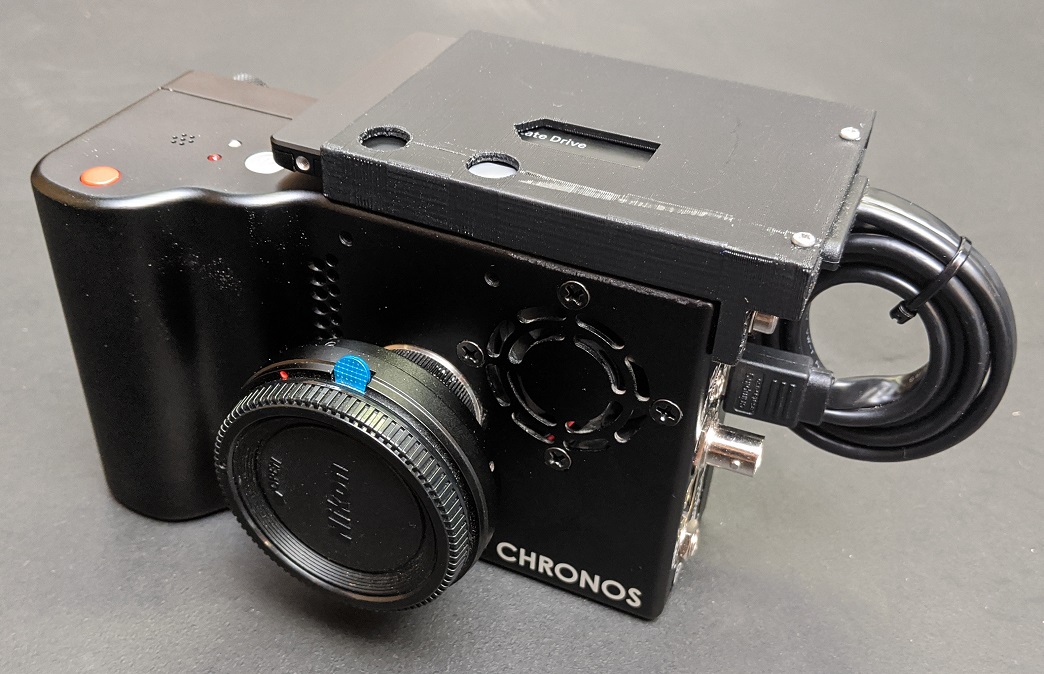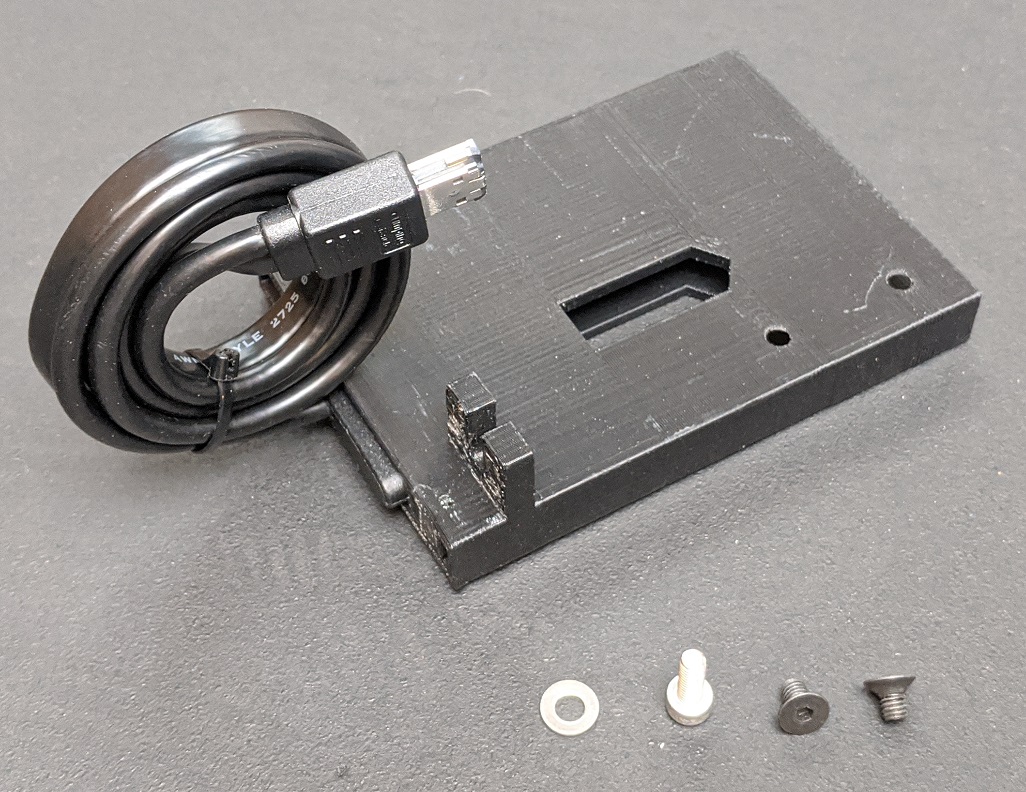1
Chronos User Discussion / SSD Cage for Chronos 1.4/2.1-HD - 3D-printable
« on: March 25, 2020, 03:13:49 PM »
This is an SSD holder for the Chronos 1.4 and 2.1-HD. This accessory is invaluable when shooting DNG on the go; save speed is vastly improved compared to an SD card. The camera can write about 60MB/s to a SATA SSD instead of ~12MB/s to most SD cards. DNG saves at about 12FPS on the 2.1-HD and about 18FPS on the 1.4, at full resolution.

We plan to offer this for sale in our store eventually, but you can 3D print one right now! The attached models have been updated from the pictures shown, the SD card opening was widened so you can easily grab an SD card with your fingers instead of needing pliers to remove it.
We're in the process of ordering custom versions of the eSATAp cables that have a short cable length to avoid the need to coil up the extra cable.
Items you'll need

3D Printer to print the SSD cage (see attached files)
3D Print Instructions
This file has been tested on the Makerbot Replicator 2X
Recommended settings:
Print with raft, raft expansion 12mm
Print with supports
Orient the part with the drive opening pointing straight up
We've been using these at Krontech for the last few months and these mounts are incredibly useful, let us know how they work for you! One modification we were thinking about is centering the SSD above the camera. Currently, it overhangs the screen and makes it harder to see if you're looking from an upward angle. Thoughts?
We plan to offer this for sale in our store eventually, but you can 3D print one right now! The attached models have been updated from the pictures shown, the SD card opening was widened so you can easily grab an SD card with your fingers instead of needing pliers to remove it.
We're in the process of ordering custom versions of the eSATAp cables that have a short cable length to avoid the need to coil up the extra cable.
Items you'll need
3D Printer to print the SSD cage (see attached files)
- eSATAp to SATA drive cable The search term to find this is "esatap cable" if you want to find other brands
- M4x12mm screw x1
- M4 washer x1
- M4x8mm countersunk screw x2
- M2x10mm sheet metal screw x2
- Cable tie
3D Print Instructions
This file has been tested on the Makerbot Replicator 2X
Recommended settings:
Print with raft, raft expansion 12mm
Print with supports
Orient the part with the drive opening pointing straight up
We've been using these at Krontech for the last few months and these mounts are incredibly useful, let us know how they work for you! One modification we were thinking about is centering the SSD above the camera. Currently, it overhangs the screen and makes it harder to see if you're looking from an upward angle. Thoughts?

